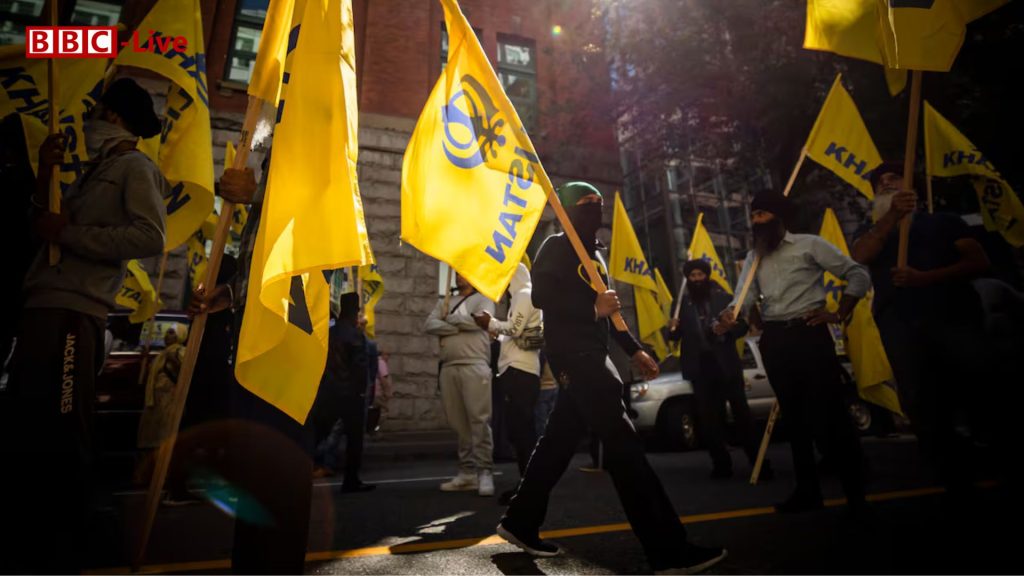
Canada current status
Recent clashes in Brampton, Ontario, raised concerns about tensions between Sikh and Hindu communities. The violence occurred on November 3 during protests at the Hindu Sabha Mandir temple. It caused damage and drew condemnation from both national and international figures.
The unrest followed visits by Indian government officials to various temples in Ontario. This was part of an effort to connect with the local Sikh community. Tensions increased due to the Khalistan movement, which seeks an independent Sikh state. Sikh activists, including those from Sikhs for Justice (SFJ), organized a protest against Indian government actions they view as targeting Sikh dissenters abroad.
The protest quickly became violent when counterprotesters clashed with the activists. Many of these counterprotesters supported Indian Prime Minister Narendra Modi and his nationalist views. Conflict escalated, with videos showing people throwing bricks and waving different flags representing their political views. Traffic was blocked outside the temple, and some individuals chanted inflammatory slogans.
The aftermath of the clashes has raised alarms across Canada, particularly within the South Asian community. Canadian leaders, including Prime Minister Justin Trudeau, condemned the violence. India’s Prime Minister Modi also denounced the actions, calling them an attack on a Hindu temple. Local police made several arrests, with potentially more to come. However, some in the Sikh community argue the issues behind the violence are more complicated.
Inderjeet Singh Gosal, who helped organize the protest, stated that their aim was not against Hindus, but in opposition to the Indian government’s treatment of Sikhs. He has been charged with assault related to the clashes but insists the counterprotesters were the ones who initiated the violence.
Jaskaran Sandhu from the World Sikh Organization warned that Hindu nationalism’s influence is growing in Canada. This imported ideology has increased tensions that were historically absent. He emphasized that the conflict is between Sikh independence advocates and supporters of Modi’s nationalist agenda.
Political science expert Paritosh Kumar noted that Hindu nationalism has empowered supporters outside India, particularly those facing racism. However, he cautioned that tensions could lead to more violence, especially as the Indian government portrays protests as assaults on Hindu places of worship.
Misinformation has played a role in escalating tensions. Brampton City Councillor Gurpartap Singh Toor pointed out that misleading reports from Indian media and social media platforms have fueled distrust and fear. Local Hindu temple leader Roopnauth Sharma stated that the unrest shouldn’t be seen as an overall Hindu-Sikh conflict. He supported regulating demonstrations near religious sites to maintain peace.
Brampton’s Mayor Patrick Brown and others have called for new laws to prevent protests at religious locations. Trudeau described the violence as “unacceptable.” However, some in the Sikh community believe these responses overlook deeper issues related to political tensions and misinformation.
As these tensions continue, the clashes in Brampton highlight the complicated relationship between religion, politics, and identity in Canada’s South Asian community. There are fears that this violence may mark the start of a broader conflict, potentially harming the historic connections between Sikh and Hindu communities.




